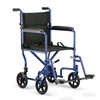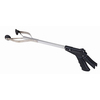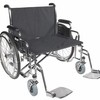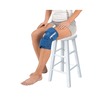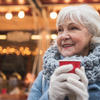Stay Safe This Winter
Posted on
The winter can be a magical time, but it’s also one that poses significant risk to older adults. The drop in temperature can lead to a higher risk of health problems and complications, such as hypothermia, frostbite, and falls caused by ice and snow.
However, these risks can be mitigated by taking precautionary steps and being prepared for how the changes will affect your body and routine. With that in mind, here’s our mini guide to how everyone, but especially older adults, can stay safe and secure this winter.
The Effects Of The Cold
Let’s start with a basic fact of the human body: as we age, our bodies begin to lose heat faster than they used to. But it can be harder to detect those changes as our body becomes less responsive to stimuli, which means the effects of the cold can often take place without you noticing.
This can happen whether you’re indoors or out, so try and avoid spending prolonged periods in cold places and pay close attention to the external conditions. This applies indoors as well, where even a house or nursing home that isn’t properly heated can put you at risk.
Hypothermia
One of the biggest risks caused by these changes is the onset of hypothermia. That’s why it’s important to be aware of the warning signs of hypothermia:
- Cold skin that is either pale or ashy in complexion
- Sudden feelings of lethargy or tiredness
- Confusion and disorientation
- Weakness and difficulty standing up
- Issues with walking and coordination
- Slowed breathing or heart rate
Call 911 if you think you or someone else has hypothermia.
Cold Weather And Pre-existing Illnesses
Pre-existing conditions can often make the winter a more challenging time, especially as our bodies age and we become more vulnerable.
There are a number of illnesses that can make it more difficult to regulate your body temperature and keep warm, including:
- Thyroid issues can make it harder for your body to regulate its own temperature
- Diabetes can cause issues when it comes to blood flow
- Parkinson’s disease and arthritis can make it harder to put on additional layers
Cold weather can also put an added strain on your heart, especially if you have heart disease or high blood pressure. so you should take care not to over exert yourself during the winter, such as by shoveling snow or performing heavy outdoor chores. If you are working outdoors, remember to dress warmly and work as slowly as you need in order to prevent sweating.
Keep Warm Indoors
Far from being an outdoor condition problem, some of the biggest risks posed by winter weather can happen while you’re inside your home, so it’s important to be aware of how to keep yourself warm and secure even when you’re indoors.
The most important thing is to ensure your house is adequately heated, keeping the- temperature of your heating set to at least 18-20°C. If you’re worried about heating bills, you can help prevent heat loss and maximize efficiency by ensuring all vents and doors are closed, even in rooms you aren’t using, and placing a rolled towel in front of doors to eliminate drafts.
There are also a number of steps you can take when it comes to clothing and diet that will help you cope with the winter weather, such as:
- Dressing warmly even if you aren’t planning on leaving the house, by wearing warm socks and slippers and keeping a blanket over your legs
- At night, make sure you wear long underwear beneath your usual pajamas and use extra covers for additional warmth
- Ensure that you’re eating enough food to maintain your weight, as losing additional body fat could make it harder for your body to stay warm
Safety Precautions
Throughout the winter, many people will rely on additional sources of heat, such as fireplaces or space heaters. And while these are tremendously beneficial, if you’re doing so you should always make sure you’re operating them safely and securely.
If you’re lucky enough to have a fireplace it can provide an effective and valuable secondary heat source. But as with any open flame heating source, you also need to be careful when using your fireplace.
Securing a grate around the front of the fireplace will ensure that the coals and other flammable elements are safely secured and won’t reach any fabrics such as carpet or drapes. And when using a fireplace, be vigilant and make sure to never leave a fire unattended.
You also need to ensure that you are maintaining the chimney, as a build up of soot can also cause a fire hazard, so have your chimney cleaned and inspected at least once a year.
Space heaters are also a cost effective and easy to manage heating source, but they can also be combustible and should be kept a safe distance from any flammable objects. And remember when operating a space heater, never leave it unattended and always plug it directly into the wall.
Finally, whether you’re using a fireplace or another heating source such as natural gas or kerosene, you need to take care to ensure your appliances and heating sources are thoroughly vented and cleaned. With increased usage comes an increased buildup of dirt, debris, and an increased risk of malfunction, which can in turn lead to a risk of both fire and carbon monoxide poisoning. In addition to regular cleaning and inspection, you should also make sure all of your smoke and carbon monoxide alarms are functioning properly.
When staying safe this winter you should also make sure you have everything you need when it comes to health and comfort. And protecting your health and ensuring you live as independently as possible is what we believe in here at Island Mediquip, so if you have any questions don’t hesitate to get in touch.








